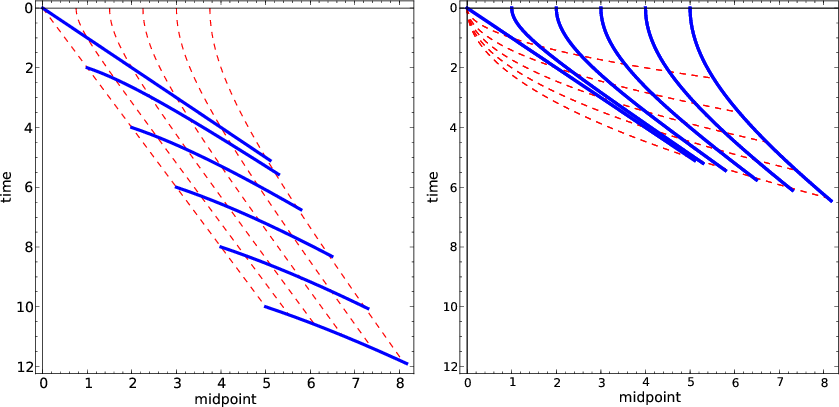|
|
|
|
Theory of differential offset continuation |
The simplest and most important example is the case of a plane dipping
reflector. Putting the origin of the ![]() axis at the intersection of
the reflector plane with the surface, we can express the reflection
traveltime after NMO in the form
axis at the intersection of
the reflector plane with the surface, we can express the reflection
traveltime after NMO in the form

|
|---|
|
ocopln
Figure 3. Transformation of the reflection traveltime curves in the OC process: the case of a plane dipping reflector. Left: Time coordinate before the NMO correction. Right: Time coordinate after NMO. The solid lines indicate traveltime curves at different common-offset sections; the dashed lines indicate time rays. |
|
|
|
|
|
|
Theory of differential offset continuation |